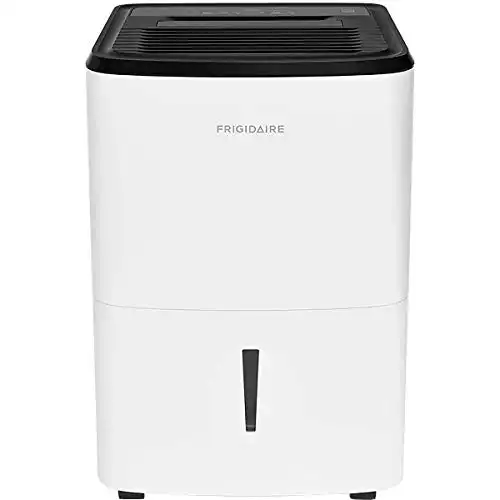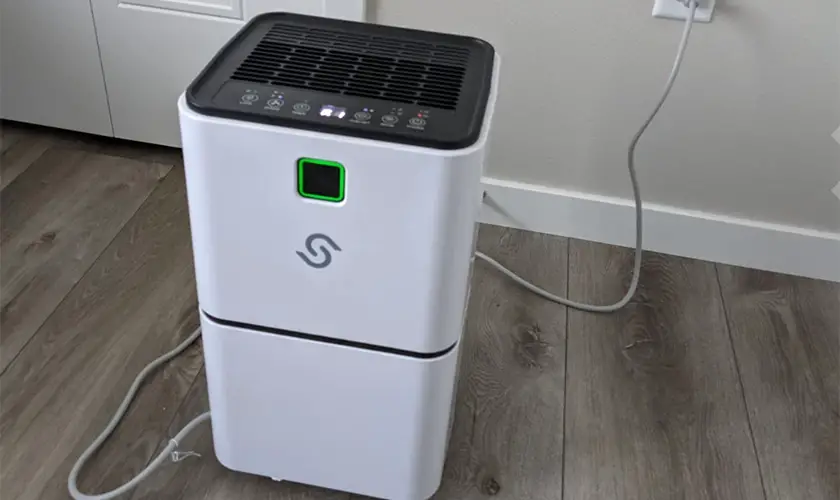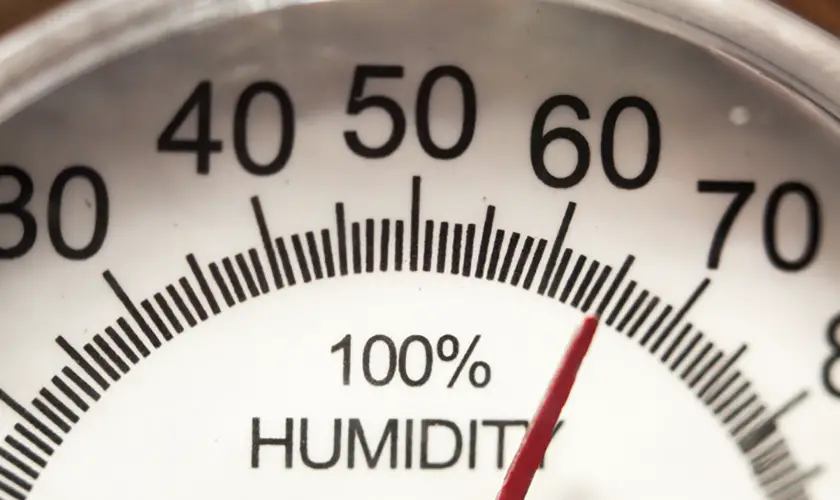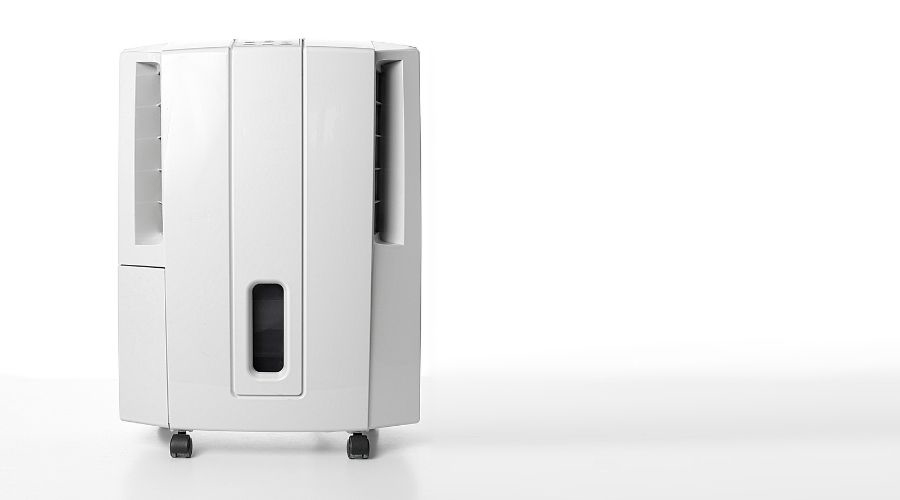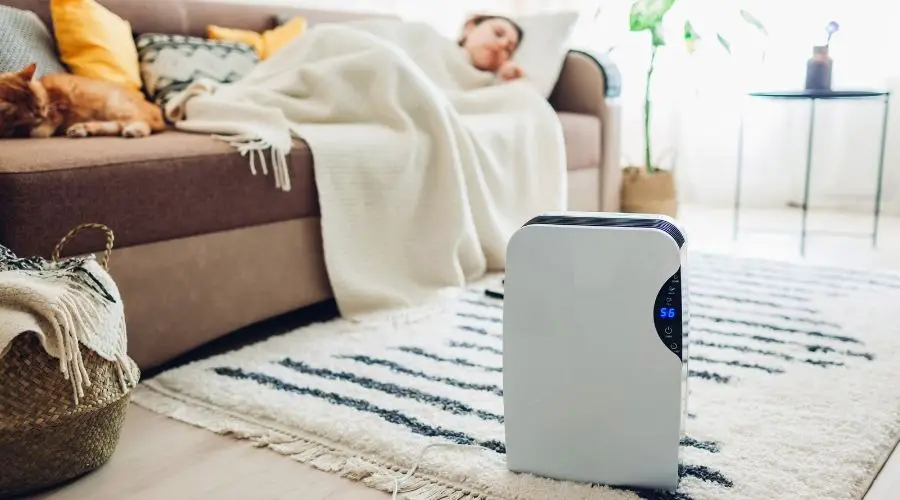
Understanding what humidifiers and dehumidifiers do when used in your home is essential when fixing air quality issues. A humidifier adds moisture to the air in your home, while a dehumidifier will remove air through a refrigeration process.
Maintaining humidity levels between 30% and 50% is ideal for indoor residential applications. Levels dropping near or under 30% will require a humidifier to add moisture.
A dehumidifier is not designed to make a room warmer. When levels exceed 50% relative humidity, a dehumidifier will help remove moisture and elevate home humidity levels. A dehumidifier reduces humidity levels and does not purify the air nor heighten its temperature.
When the weather is hot or cold in your location, a dehumidifier will use a cold refrigeration process to break down the humid air through a condensation step. The air returns to the original level and will not directly add heat to the room or space.
An air purifier is a different piece of equipment that utilizes a different process than a dehumidifier. As humidity levels reduce, will humid feelings and musty smells often associate with high humidity?
How much heat will a dehumidifier add, and will use one make a room warmer?
A Brief History of Dehumidifiers
In 1903, Willis Carrier innovated a solution to remove high humidity levels in a Brooklyn printing plant. He invented the first dehumidifier, which led to the invention of air conditioning.
The first recorded usage of humidifiers and dehumidifiers started in ancient Greece and Rome to avoid mildew damage in storage areas.
Air conditioners, engineered to reduce humidity in the air by removing excess heat and cooling open spaces, essentially reduce the relative humidity level.
Today, there are many dehumidifier products available on the market. Basement, crawlspace, residential, and commercial options are available for all applications.
Dehumidifier units rate the number of water pints removed daily, measuring performance. Multiple retailers offer consumers various dehumidifier makes and models.
The larger the whole-home dehumidifier unit, the more moisture they can remove throughout the day. Portable units are best for specific areas, and whole-home systems regulate humidity levels throughout the home.
How Does a Dehumidifier Work?
A dehumidifier will remove moisture from the air, making a living space less susceptible to dust, and allergens and improving overall conditions. It is important to note that while using a dehumidifier, the air is essentially becoming drier.
The process of dehumidification goes through a self-contained or whole-home refrigerant system. The whole-home system works as both a humidifier and dehumidifier, retaining control over humidity levels all year.
The first step is to understand the process to understand if a dehumidifier can make a room warmer inside your home.
The following is how a dehumidifier works:
1. Air is drawn into the unit. Air from the room space draws into the dehumidifier system through a slotted grille. A fan sucks the air into the device.
2. The evaporator coil cools warm air. The air sucked into the unit is cooled by moving over freezing refrigerant pipes.
3. Warm air condenses. Once warmed, the moisture-ridden air drips into a pan, one drop at a time. Some portable units come with a bucket that requires dumping once a water level reaches.
Whole-home systems push collected condensation through a hose leading outside of the home. Follow the manufacturer’s instructions on emptying collected water from portable units.
4. The air is then reheated. The atmosphere is now free of moisture and moves from the cold pipes over hot condenser pipes. Reheating the now cooler air, free of water, increases the temperature.
5. Air is distributed through the room. The air is pushed into the room until it reaches the desired level. The atmosphere is now warmed to the actual temperature when entering the system and is now pushed back into space, free of moisture.
Different dehumidifier systems handle a certain number of pints of water per day. This requirement bases itself on individual needs and specific water removal amounts.
Higher pints-per-day system ratings are required for homes requiring a prolonged dehumidifier running time. Smaller spaces will need smaller pints-per-day dehumidifier system capabilities. Pint removal ranges from 20, 35, 45, 50, 60, 70, and 95-pint per day capacities.
Do Dehumidifiers Make Rooms Feel Warmer?
A dehumidifier does not make a room warmer. Removing moisture from the air will not noticeably lower the room’s temperature.
If the unit is in a smaller room and runs continuously, the heat from the device may increase the temperature slightly. The airflow will not contribute to an increase or decrease in temperature.
A humidifier adds moisture to the air when levels are at or below 30%. The increase in humidity will slightly increase the room temperature.
A dehumidifier will remove moisture and make conditions more comfortable – not increase room temperature. The process begins with pulling air across cold pipes to draw water, then moves over hot lines returning to the actual temperature, then pushed back out.
This process indicates that the dehumidifier removes water from the air and circulates it throughout the space, maintaining the same temperature, not making the room warmer.
Depending on the size of the area where the humidity level requires an increase or reduction, the heat generated from the dehumidifier will provide the only boost in temperature.
What is the Main Difference Between Humidifiers & Dehumidifiers?
A humidifier and dehumidifier regulate the levels of humidity within a space. A humidifier increases humidity levels by adding moisture to the air, while in contrast, a dehumidifier will add cold air to the area, reducing humidity levels.
Both systems aim to maintain a 30-50% humidity level in the air. Humidifiers are available at many retailers and offer essential air diffusers.
One known manufacturer of humidifiers is Vicks. Their humidifiers enhance indoor air quality to improve breathing at 40-50% relative humidity.
On the other hand, a dehumidifier will help with cold symptoms such as coughing, reduce the presence of mold and bacteria in the air, and more.
| Humidifier | Dehumidifier |
|---|---|
| Adds moisture to the air | Removes moisture from the air |
| Humidifiers Do not require refrigeration | Requires refrigeration (cold air) |
| Multiple energy-saving models | Whole house or portable units |
| Regular maintenance (change water, clean filter, clean unit) | Regular maintenance (clean filter, clean system) |
| Humidistat control (whole-home units) |
What is a Hygrometer & How Do You Use It?
Knowing when to remove moisture in the air or add it is key to regulating ideal levels. If you wish to accurately measure the water or humidity in the air, a hygrometer is what you need.
You can purchase a variety of hygrometer styles on the web or in select local hardware stores. Hygrometers are available for indoor use, gun vaults, safes, terrariums, and more. If you have a digital hygrometer, you can test it by trying the salt test by following these steps:
- Put two teaspoons of salt into a small container (with a top)
- Add a bit of distilled water (no more than a couple of drops)
- Place the hygrometer in the container and wait 24 hours
- The hygrometer should read around 75% (adjust if not)
Humidity sensors utilize within indoor applications and more. Various equipment and machinery across many industries rely on accurate humidity level readings.
Even your car’s rear window defogger relies on a humidity sensor. Your home is no different; depending on proper humidity levels to maintain a comfortable 30-50% relative humidity.
Measuring the quality of a hygrometer is based on high or low sensitivity and low recovery and response time. Too much moisture can damage electronics, a building’s structure, and a human’s respiratory health.
When Should You Use a Dehumidifier in Your Home?
Various signs indicate a dehumidifier may prove beneficial in your home. Some may hide in plain sight but will reveal themselves in some form over time.
Multiple areas of your home collect excess moisture, such as attic and basement spaces. The added element of potential health benefits will help determine the need for the use of a dehumidifier.
A dehumidifier will reduce higher humidity levels if your home has been exposed to water leakage or other damage leading to increased moisture levels.
Step one is to understand if your home and your health will benefit most from portable or whole-home systems. Self-contained units will regulate the humidity levels in smaller areas, while whole-home dehumidifier units are made to control levels throughout your home.
The following is a list of signs that your home could use a dehumidifier:
- Signs of mold and mildew
- Humid feeling in the air
- Sweltering environment
- Water damage
- High allergy levels
Consulting with your local indoor air quality and comfort expert may reveal more reasons why a dehumidifier will be beneficial.
Air quality professionals will provide detailed information about humidity and the effects of low and high levels and provide the best possible solution for your home.
An air quality inspector will identify airborne pollutants, pathogens, and biological pollutants that may exist even in a newly built home.
Combined with air quality knowledge, experts also specialize in air conditioning and heating solutions, providing assistance and guidance on your home’s entire airflow and indoor air quality level.
Does a Dehumidifier Help with Allergies?
Yes, a dehumidifier may help curb the effects of allergies within your home. Those affected by dust mites will significantly benefit from using dehumidifiers in areas of high humidity.
According to The Journal of Allergy and Clinical Immunology, decreasing indoor humidity offers two advantages: non-contaminating environmental control and significant improvements in bedroom spaces.
The study revealed that using a dehumidifier in a bedroom reduced specific allergens by more than 50%. Clean the unit regularly according to the manufacturer’s instructions to ensure your home dehumidifier’s longevity and operational output.
Which Dehumidifier is the Best to Buy?
It is wise to consider various factors when purchasing a dehumidifier unit for your home. The main features to focus on including the following:
- Pint capacity
- Wheels
- Electronic or manual control
- A collection bucket or tank for condensation collection.
There are also two main types of home dehumidifiers to consider:
1. Portable dehumidifiers: Portable generators are for when humidity levels rise in specific spaces within the home, such as the basement, crawlspace, or certain rooms.
2. Whole-home dehumidifiers: Whole-home humidifier systems control humidity by acting as a humidifier and dehumidifier.
Here are some of the best dehumidifiers in the market:
Final Thoughts
Knowing your dehumidifier’s effect on temperature starts with understanding the mechanics behind the system. The process involves capturing air within a space through a grille and crossing cold refrigerant pipes.
The air is cooled, and condensation drips into a collection pan. The air then moves over hot pipes that warm the air back to the original temperature and is released back into the room. This process removes excess moisture and will not contribute to an increase or decrease in temperature.
The only added heat to a room from a dehumidifier is what is generated from the unit. The larger the portable or whole-home appliance, the more energy it will consume. The increase in power will contribute to only a slight increase in room temperature.


